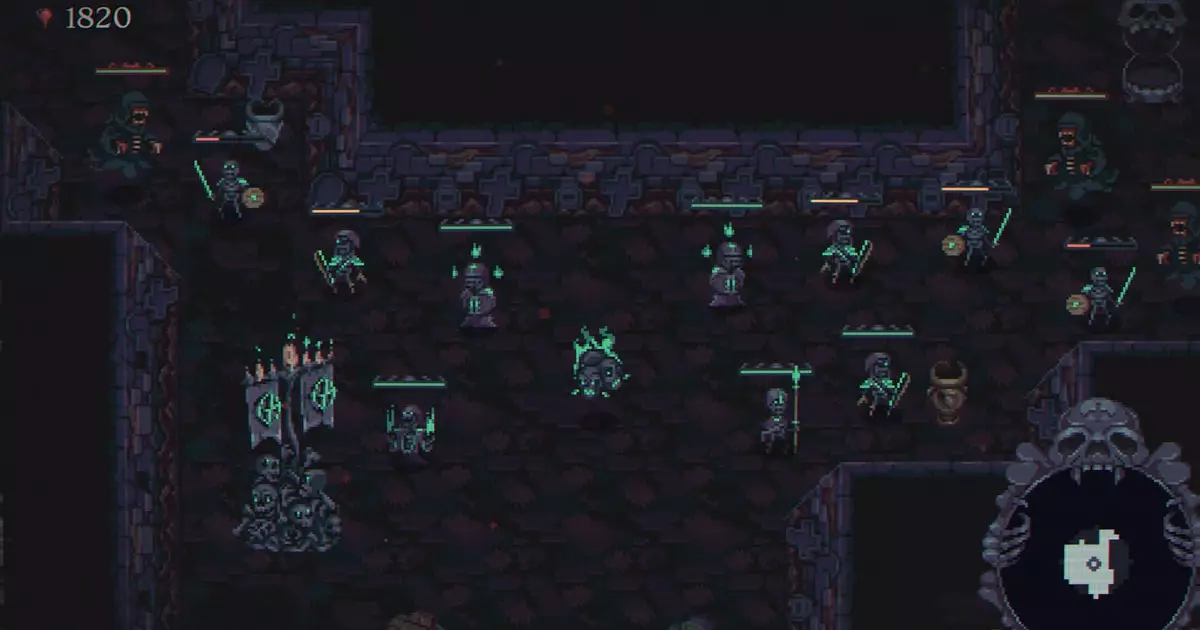In the ever-evolving landscape of indie gaming, the emergence of Skull Horde captures the attention of both strategy enthusiasts and casual gamers alike. This innovative title allows players to adopt the role of a necromancer in a charming yet grim pixelated universe. Unlike traditional action RPGs that demand meticulous manual control, Skull Horde offers a refreshing twist by blending auto-battler mechanics with dungeon exploration. Here, players can delegate the chaos of combat to a cadre of minions, providing a unique gaming experience that stands apart from the tightly coordinated battles of genre classics.
The defining characteristic of Skull Horde lies in its real-time battles where players orchestrate their strategies without casting a direct spell on the battlefield. Instead, your minions act autonomously, driven by the choices you make regarding troop composition and upgrades. As a necromancer—represented by a whimsical flying skull—the challenge does not involve manual labor during fights but rather encompasses critical decision-making before engagements. Choosing when and where to delve into the dangers of the dungeon becomes paramount as you assemble a team from various unit types. Combining duplicates to form stronger entities and unlocking unique abilities through meticulous troop management adds layers of depth often absent in auto-battlers.
Skull Horde’s pixel art style resonates well with fans of retro gaming. The intention is not merely to portray a whimsical world but to entice players into a narrative filled with dark humor and strategic conquests. The primary draw of featuring a necromancer as a flying skull, for instance, is emblematic of its quirky charm. The game thrives on contrast—while it maintains an ominous undertone with themes of death and battle, it simultaneously invites playful engagement through its visual presentation and character design. This duality enriches the player’s experience, offering more than a standard dungeon crawler.
The developers of Skull Horde, 8BitSkull, previously garnered praise with their title Bore Blasters. This connection raises expectations for Skull Horde and allows for an interesting comparative analysis. Bore Blasters involved strategic depth through incremental gameplay as players navigated cave systems in search of riches. Similarly, Skull Horde promises a rewarding experience that hinges on player choice and progression management. However, while Bore Blasters leaned towards the realm of mining exploration, Skull Horde skillfully combines strategy, exploration, and real-time combat in a dungeon setting, appealing to a broader audience seeking a lighter yet engaging adventure.
With a planned release date in 2025, anticipation surrounds Skull Horde’s arrival. Its blend of humor, strategy, and unique gameplay mechanics positions it as a promising candidate within the auto-battler genre. The gradual unveiling of additional game elements through assets shared on platforms like Steam only heightens interest. Players and critics alike will be keen to see how the final product evolves and whether it can carve its niche alongside both indie gems and established franchises. As the gaming community waits in excitement, Skull Horde stands poised to redefine necromancy in the pixel realm, paving the way for new adventures.


Leave a Reply